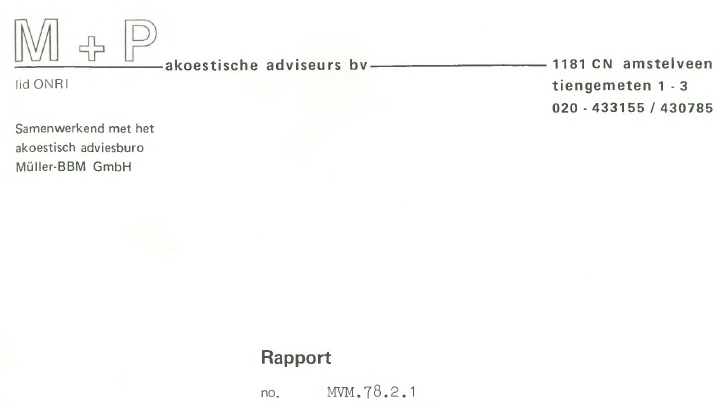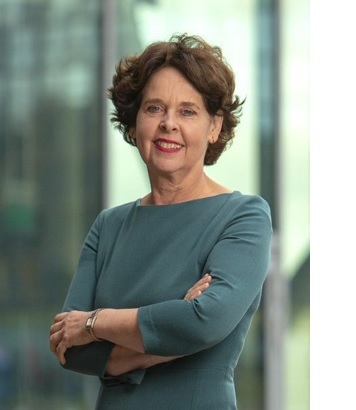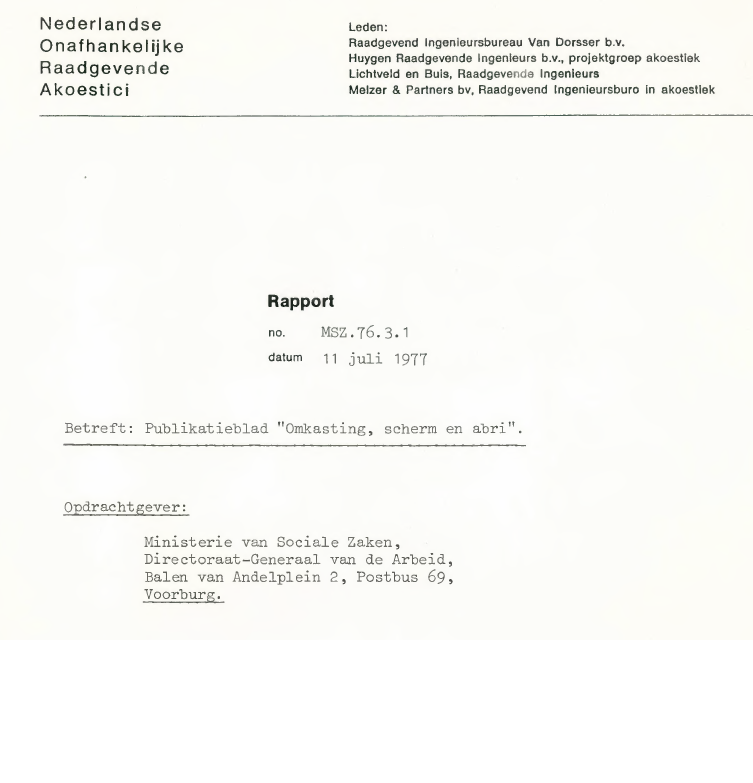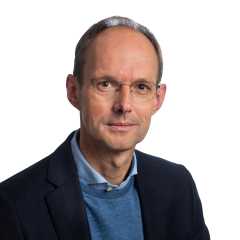
M+P standing firm in the sector
M+P is certainly not the largest or smallest engineering firm in the Netherlands. But since 1978 we have been members of the (Royal) Koninklijke NLingenieurs trade association, which combines the strengths of individual consultancy and engineering firms. As Theodoor Höngens puts it: “We are one of the larger small ones.” As a member of their Supervisory Board, he knows what he’s talking about. Fellow director Jan Hooghwerff adds: “We put a lot of time and energy into this association because we see its greater importance.”
From NORA to NLingenieurs, a piece of history
The trade association was founded in 1917 under the name of the Orde van Nederlandsche Raadgevende Ingenieurs (ONRI). It’s name nowadays is Koninklijke NLingenieurs, and the chair is occupied by parliamentarian Carla Moonen.
Abraham Melzer was initially involved in mostly hall and building acoustics until Melzer and Partners was founded in 1972. He was barely aware of such a thing as a trade association. With Alexander von Meier at the helm, a collaboration was quickly initiated between three agencies (Lichtveld en Buis, Van Dorsser and Huygen). Together they formed NORA (Nederlandse Onafhankelijke Raadgevende Akoestici) [the Dutch Independent Consultative Acousticians]. It was a good way to get their foot in the door of national government, and assignments from various ministries followed. This collaboration lasted about seven years and saw a period of growth and professionalisation. It was then time to add the “Lid van ONRI” quality mark to the M+P name in order to recognise its development into a fully-fledged engineering firm.
 Quote Carla Moonen, Voorzitter Koninklijke NLingenieurs:
Quote Carla Moonen, Voorzitter Koninklijke NLingenieurs:
“First of all, congratulations to M+P on their 50th anniversary.
In their story, Theodoor and Jan explain what added value being a member of Koninklijke NLingenieurs brings to M+P. In addition to knowledge sharing, unique collaborations have been established between members of our trade association. And this is not limited to the SMEs themselves, but also between large and small companies with their own specialisations. And as Theodoor points out, the members also benefit greatly from the general terms and conditions for the sector, such as the DNR for designing and advising in built-up environments. This ensures no-one has to reinvent the wheel.
I attach great importance to the fact that, as a sector, we are there for SMEs. They are the engine of our economy, and they are often strong in innovation. This also applies to M+P. I visited the company in Vught and am impressed by their performance in all the different types of measurement systems, such as for sound. They are the best in the Netherlands at this!“
The advantages of a trade association
“In the beginning, it was especially important for us to meet other similar-sized consultancies who were working on similar topics. Arranging or figuring something out together is very practical,” says Theodoor. He then goes on to mention a few more advantages: “If you meet your fellow consultancies more often, you can also discuss unfavourable issues more easily without legal conflict. The result of this is that you can eliminate or at least reduce any problems when you meet each other in the field. And if you need a second opinion, you can simply call the company in question for the information you need for the assessment. In fact, the greatest importance is that we help each other instead of getting in each other’s way.”
Also significant: terms and conditions for the sector
“But it’s not just about substantive themes,” Theodoor continues. “You can also coordinate, for example, pensions, fringe benefits or a specific insurance package. One relevant thing, for example, is the limitation of liability. Anyone can draw up terms and conditions for their individual company, but doing it as a sector adds more weight.”
Collaborate and share knowledge
According to Jan, in addition to the collaboration with Müller-BBM, continuous contact with other consultancy firms is important, whether or not they are affiliated with NLingenieurs. “The result is that we can combine our specialisms. Sometimes we are part of a larger framework agreement for clients such as ProRail and Rijkswaterstaat. We also sit on various standards committees on behalf of NLingenieurs, and we participate in knowledge sharing for important programmes such as those involving mobility, energy transition, climate adaptation and a healthy and sustainable built-up environment. Within the world of consulting engineers, M+P is well known among agencies, both large and small. We mostly work on themes that serve the public interest. This unpaid work is indirectly important to M+P. Not only for our image, but also for our projects and future developments”
Time and space
“Actively participating in a sector organisation shows that we are looking beyond our own interests,” adds Theodoor. “It means we are affiliated with larger businesses. For example, just before corona we put “noise and health” on the map by sitting down at the table with colleagues from NLingenieurs and the GGD in Vught about how these topics can be interpreted within the new Environment Planning Act. This is an important topic for which we would like to plan a follow-up.”
Active participation takes a lot of time. There is always an ongoing consideration about whether it will provide added value for M+P as a company. Theodoor currently spends an average of one day a month in his role as a member of the Supervisory Board and doing other activities for NLingenieurs, which will soon include a board position for the stichting Post Academisch Onderwijs [Post-Academic Education foundation]. “That’s more than enough for now; it must remain fun after all.”


